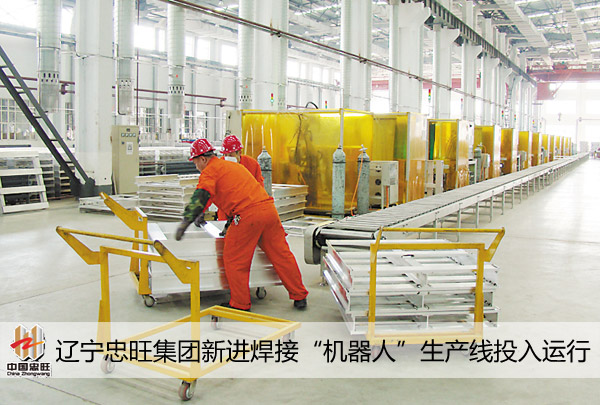China Zhongwang has completed the installation and trial run of its newly introduced welding robots.
To meet the increasing needs of the high-precision processing of aluminium further fabricated products, the Group decided to introduce the production line of advanced welding robots, With technical support of the equipment provider, the installation and test run are completed as scheduled. The new equipment showed its capability, especially in the further fabrication of large-scale heavy pallets, during its trial run that lasted a month.
The welding robot delivers excellent performance, with its intensive positioning unit that coordinates swiftly with the robot and works on TIG welding. The cooling water circulating pump effectively protects the welding gun with its high cooling, self-refilling water. The semi-automated, fully digital arc welder can store up to 32 welding specifications, meeting the welding needs of aluminium further fabricated products. The robot can also be linked to other kinds of cutting edged equipment for high-precision processing. Its multiple joints allow a high degree of movement and welding efficiency with energy saving properties. The belt conveyor facilities the production flow, enhancing welding efficiency as well as quality compared with the previous setup. It is expected that the new robots will see a positive prospect for future production.
In 2012, the Ministry of Industry and Information Technology promulgated the 12th Five Year Plan for the non-ferrous metal and new material industries, highlighting the need to increase R&D capability and efforts in deep processed aluminium profiles. This shows that China has attached great importance to the processing of industrial aluminium profiles, which facilities the emerging high-end aluminium processing sector.
According to its development strategy, the Group focuses on the aluminium extrusion and further fabrication businesses in addition to industrial profiles. In the aluminium extrusion segment, the Group plans to acquire aluminium extrusion production facilities from overseas and produce medium and thick plates, strips and foil from 2011 to 2014. Moreover, the Group has started to recruit overseas technical professionals to accelerate the establishment of its R&D team. The first phase of the aluminium extrusion project is expected to be completed in the second half of 2014, with an annual output capacity of 1.8 million tons. The capacity is expected to reach 3 million tons by the end of 2018. While China’s aluminium further fabrication industry is still at its infant stage, it is promoted by the government and crucial to the Group’s profitability as well as global competitiveness. Aluminium further fabrication, which has high added value and gross margin, is not included in the U.S. anti-dumping and countervailing investigations, meaning a great potential for export. The Group expects the aluminium further fabrication centre to boost its competitiveness and drive its growth after the construction is competed in the second half of 2012.

